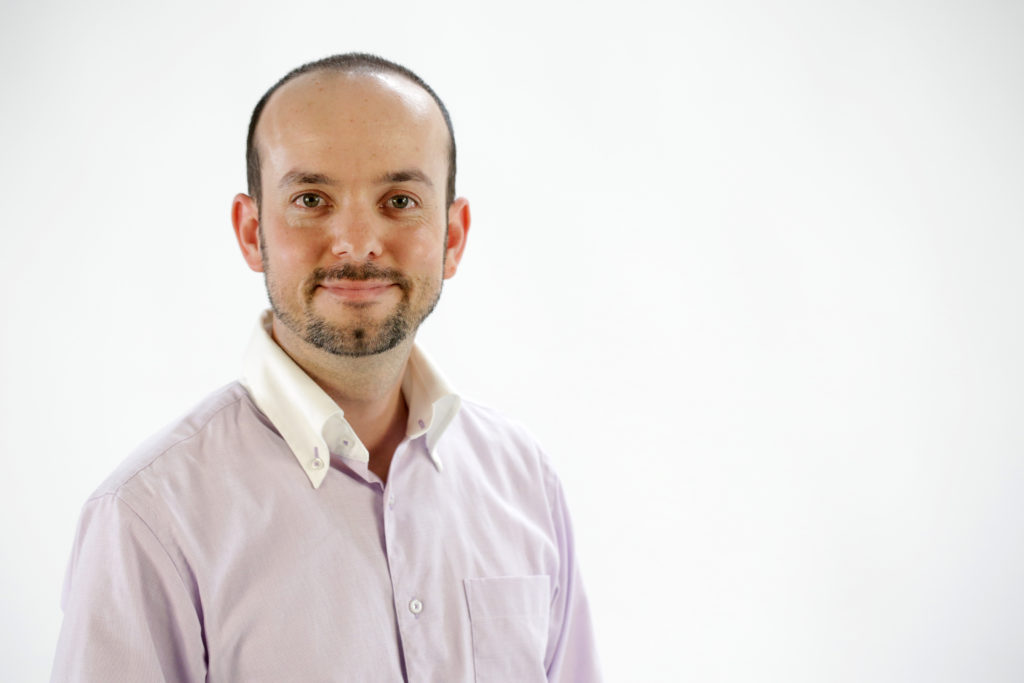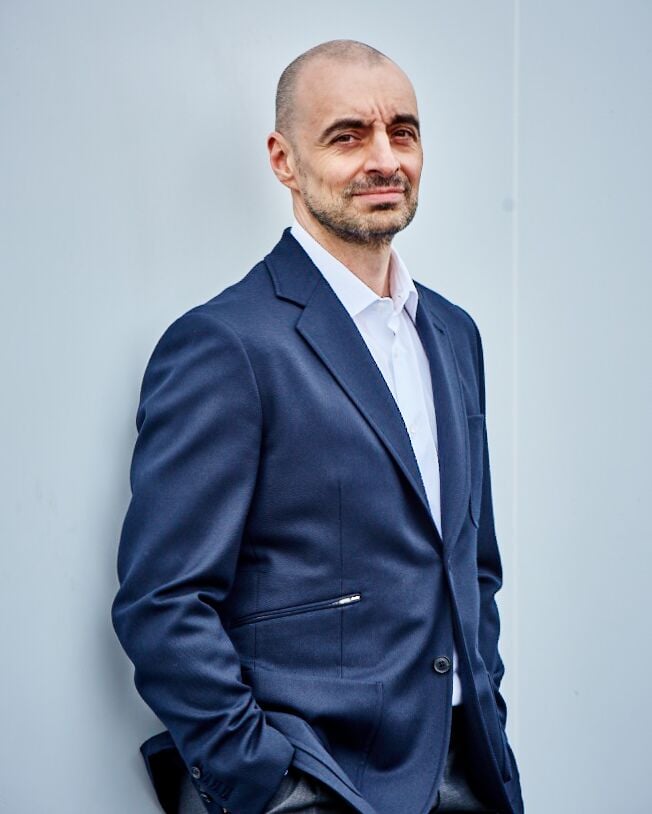Canadian Artist Renaud Davies On The Art of “Living Photography”


Artnet Gallery Network

Renaud Davies is a Canadian artist based in Hiroshima, Japan. His work specializes in ‘cinemagraphs’, a type of “living photography” inspired by the ancient Japanese poetry form, Haiku. Recently Ulvi Kasimov, the founder of .ART, the art world’s digital domain, spoke to Renaud to learn more about why he moved to Japan and why the cinemagraph is his preferred medium.
The typical Western artist is struggling financially. Is it the same in Japan?
I think it’s the same all over the world. To be successful and have your art as your sole source of income — and be well off doing that — is not common. Most people do it as a hobby. My main income is teaching at a university and this is just something extra that I do. Some brilliant artists are making brilliant works but unfortunately, they have to spend most of their time doing a different job because they just can’t support themselves doing that 100 percent of the time. It’s a real struggle.
What is happening in the contemporary art scene in Japan currently?
I am no expert, but if you visit a contemporary art gallery in Japan there’s a lot of variety. Abstract painting is very popular but you also have your traditional Japanese style of art, which is still flourishing. You go from sculptures and mixed media to digital work, projections, and architecture. A lot of this art can only be appreciated in a gallery: you need whole rooms dedicated to showcasing it. That said, the market for contemporary art in Japan is still really small because Japanese people rarely purchase such works.

Ulvi Kasimov, founder of .Art. Photo: Photo: Philip Sinden, courtesy of .ART.
Tell us about how you ended up living in Japan.
I studied East Asian history at university and became fascinated with Japan. I quickly fell in love with the language and culture. I decided to teach English in Japan and now I have been here for more than 10 years.
Tell us about the cinemagraph as an artform
It was invented by Kevin Burg and Jamie Beck in 2011. I came across it on the internet as an advertisement: I saw something move in a photo and it was looping. The Canadian company Flixel created software to make it easier for artists to create these ‘living’ photos and I was all over it. I started using it in my curriculum and my students just loved it. I then discovered a growing community of cinemagraph artists.
What is the appeal of the cinemagraph for you?
You can capture these special moments. It’s a little more powerful than just a still, and it’s not as overwhelming as a video. They are just so mesmerizing and captivating. You’ve got this image with a little bit of movement that brings it to life.
How did you come to specialize in this field?
I was taking photos and short videos of moments that I thought were special. I work at a very high-tech university where all the students have iPads, so we’re paperless. Our curriculum is completely digital. I started thinking, maybe I can harness my love of photography and videography and start using it with the curriculum. It’s a wonderful way to engage learners. For me, having something that was visually, aesthetically attractive was good. Finally, I discovered the cinemagraph as an engaging form of storytelling. I always loved making videos and taking photos so I thought, now I can combine the two.
This sounds perfect for our time-poor, social media-driven times.
Many people used to social networking have short attention spans. With a still photo or a picture of some artwork they look at it for a couple of seconds and then move on. If it’s a video maybe you watch the first 20-30 seconds and then just scroll and find something else. For a cinemagraph, it’s a three- to ten-second looped piece. It’s the perfect time in this digital age with all of these social networks taking off for this short, looped art form.
How has your art been influenced by traditional Japanese short-form poetry, Haiku?
I’ve studied Japanese culture, history, and language and I was very interested in the Haiku. If you have an English Haiku, it’s usually a line of five syllables followed by two further lines of seven and five syllables, but people do stretch it. The whole idea is it’s describing a very specific moment in time with clever use of juxtaposition. There’s this famous Haiku by the artist Matsuo Basho about a frog that jumps into a pond and then – splash! That’s all it is but it gives you this beautiful image in your mind of a still pond, a splash, and then silence again. When you start reading all these different Haikus there’s a lot more meaning behind the words that are used. Certain words relate to certain seasons or cultural ideas and symbols and it gets very, very deep. For
Why are cinemagraph better than video or photography in your view?
Video can take away your imagination. It says everything for you. A photo is great because you see it and then you have to imagine a lot. Where is he or she? What’s going on in this photo? The cinemagraph brings your imagination a step further – just enough to bring you in but there’s still lots of room for your imagination.
This is a whole different league from the looped GIF yes?
Yes. In the past, the quality of the GIF wasn’t great. They usually made me laugh. But these cinemagraphs are in HD and 4K quality. It’s mesmerizing. You can have something very moving, beautiful or relaxing. It’s just very powerful. You usually want around 80 to 90 percent still with just a little bit of motion in there to surprise and captivate the viewer. It’s exciting. My mind is always racing with ideas.
How do you select your scenes to make your cinemagraphs?
Originally I was attracted to nature, capturing lots of shots of butterflies, birds, and flowers blowing in the wind with maybe a little bee frozen. When I first started making cinemagraphs I was struggling. But once you start getting into it you see the world very differently. Just walking to work and looking at things and I’m thinking, what if this was moving and that was still? What if I blended this shot with this movement? And suddenly the more I do it the more ideas pop into my head. There’s nothing I’m looking for in particular; it’s just I see things. I have to carry my camera and my heavy-duty tripod everywhere I go because you just never know when you are going to see something.
Are you going to continue to build your career through social media?
Social networks like Instagram are double-edged swords. It’s a great way to share your work but at the same time, people can easily copy what you do and try to take credit for it. Also, there are so many people uploading things, so you post something and it quickly drowns in all the other photos and videos. It’s really hard to get noticed. So that for me is the big struggle right now. That said, the internet is wonderful because there’s this huge community you can connect with. You can share it with the entire world.
Do you think the gallery will eventually become extinct?
I think the gallery will always be important but with technology and art becoming so closely knit, it’s changing things a lot. For artists like me, I don’t have to try and have an exhibition or get my work showcased in a gallery to get recognized anymore.
But do people still have an important role to play as ‘taste-makers’?
You still need somebody to search through all the noise and find those gems and share them with people. But don’t need to have your work in a gallery per se. The whole idea of a gallery is traditionally a professional would choose the best of the best and showcase it. That’s why people like the art gallery. But now there are different ways to do that. This can be done by online galleries.
How else is digital technology producing new art forms?
We are seeing a lot of new forms of art. Every day new apps are coming out; applications that allow you to edit your videos and photos; add animation to stills and videos. It’s just incredible. You have kids on their iPhones and iPads playing with these apps and creating these amazing digital works of art that they’re sharing with their friends online. For example, there’s the “plotagraph” where you animate a still photo digitally. You take something like a painting and add this motion to it. People are calling it a cinemagraph but to me a cinemagraph is authentic — you have a real video and a real photo. But this has its place. People can draw or paint and bring motion to their art. All these new art forms are being born out of technology.
Which artists did you personally admire?
Jon Kayne-Houldsworth is a cinemagraph artist who I look up to. His work is brilliant. He’s a wizard at what he does. His cinemagraph was the first cinemagraph I saw. I looked at it and I was blown away, so I started following his work and started doing it myself. There’s the London-based Mario Sahe-Lacheante, who is also an incredible cinemagraph artist. And there’s also Ashraful Arefin who is in Bangladesh who does cinemagraphs and still photography. He captures a lot of cultural moments. Finally, there’s the UK-based Charles Budd who does a lot of abstract photography and uses a little bit of photo animation with nature. His stuff is absolutely wonderful.
Is the art world fair?
Is the world fair? If you don’t have money it’s really hard to do what I’m doing. The editing software that I use costs $300 a year. You also need a DSLR camera that shoots. Luckily, I’m able to earn enough teaching to do this as a hobby. What I do is not so fair but in art in general, everything’s open because of the internet; because there are so many different channels of communication it’s possible to get out there and share your work globally so everyone has a fair chance.
This interview is excerpted from Kasimov’s book The Art of the Possible, a series of interviews that explore the ways Internet technology can remake the art world. Additional interviews from the book will be published here in the coming months.